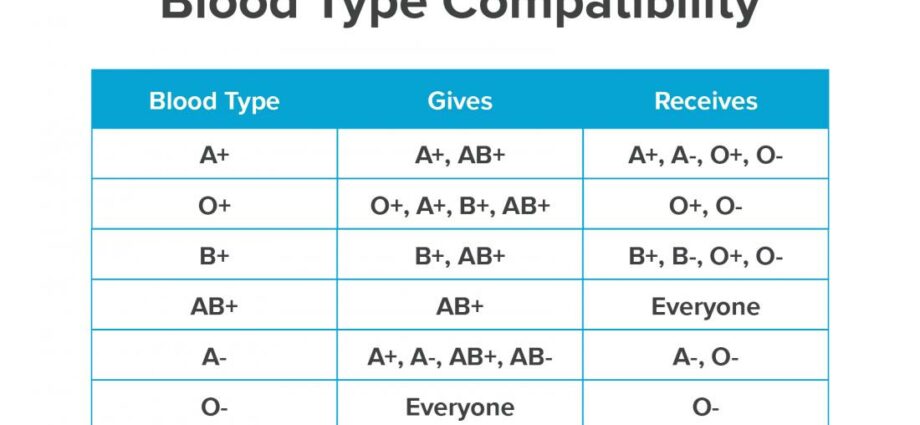Contents
Blood type compatibility: what you need to know? Video
Competent planning of pregnancy is one of the most important tasks facing expectant mothers and fathers. But even the most well-prepared parents may not even be aware of the danger threatening the baby, which may be caused by their incompatibility in blood group.
Parent Compatibility Concept
At conception, parental group affiliations have an equal influence on the formation of the child’s blood. However, there is no guarantee that the child will inherit the plasma of the father or mother. For example, for parents with groups II and III, the probability of having a child with any group is 25%.
But the main role in the concept of incompatibility is played rather not by the blood group, but by the Rh factor.
The Rh factor (Rh) is an antigen or a special protein that is found in the blood of 85% of the world’s population. It is found in the membrane of red blood cells – erythrocytes. People who do not have this protein are Rh negative.
If both parents have either Rh + or Rh–, then there is no cause for concern. Also, don’t worry if your mom’s blood is Rh-positive and your father’s is Rh-negative.
Problems during pregnancy can occur if the baby’s Rh-positive plasma is mixed with the mother’s Rh-negative blood. The reaction that occurs in this case is called the Rh-conflict. It appears at the moment when the antigen present in the baby’s blood and absent in the mother’s blood enters her body. In this case, agglutination occurs – adhesion of Rh-positive and Rh-negative erythrocytes. In order to prevent this, the female body begins to produce special antibodies – immunoglobulins.
Immunoglobulins produced during Rh-conflict can be of two types – IgM and IgG. IgM antibodies appear at the first meeting of “warring” erythrocytes and have a larger size, which is why they do not penetrate the placenta
When this reaction is repeated, immunoglobulins of the IgG class are released, which subsequently cause incompatibility. In the future, hemolysis occurs – the destruction of red blood cells in the baby’s blood.
Consequences of hemolytic disease of the fetus
In the process of hemolysis, hemoglobin breaks down into toxic substances that affect the central nervous system, heart, liver, kidneys of the child. Subsequently, anemia, dropsy, and fetal edema may develop. All this can be accompanied by hypoxia – oxygen starvation, acidosis – a violation of acid-base balance and other complications. In the worst case, death is possible.
Causes of the Rh-conflict
The likelihood of a Rh-conflict during the first pregnancy is 10%. The calmer it flows, the less likely the child’s blood will enter the mother’s. But there are factors that, even during the first pregnancy, increase the likelihood of a Rh-conflict.
As a rule, these are:
- ectopic pregnancy
- abortion or miscarriage
- separation or detachment of the placenta during childbirth or complications during pregnancy
- invasive examination methods, for example, examinations with damage to the integrity of the umbilical cord or fetal bladder
- blood transfusion
Fortunately, the level of modern medicine makes it possible to carry a healthy baby, even if the parents are not Rh-compatible, it is only important to find out about it in time and take the necessary measures.
A description of the compatibility of the zodiac signs can be found in the compatibility horoscope.










